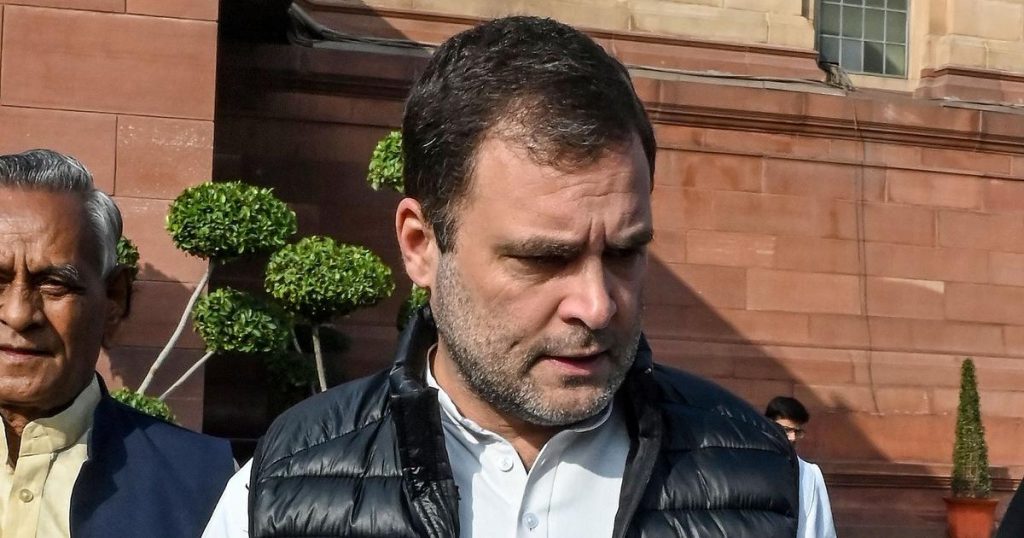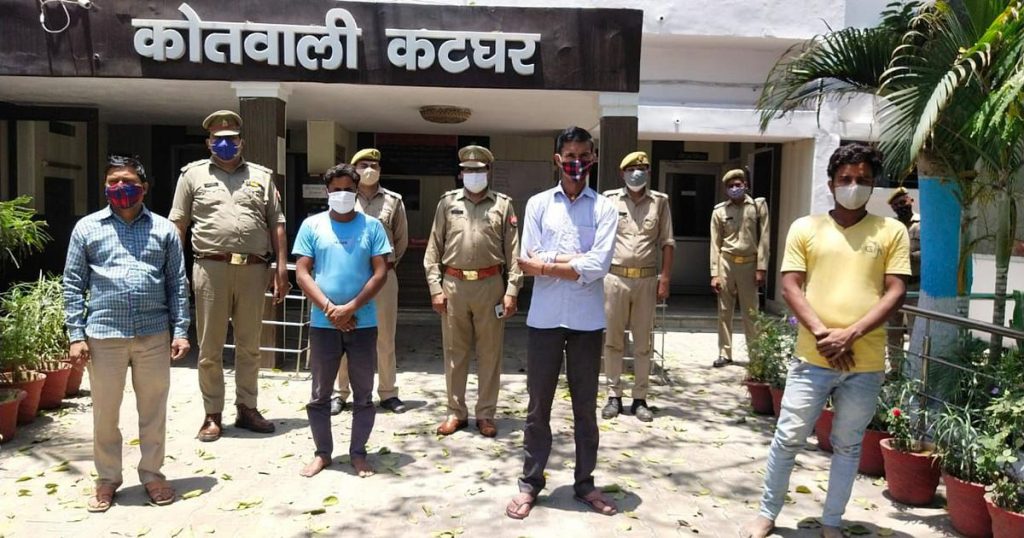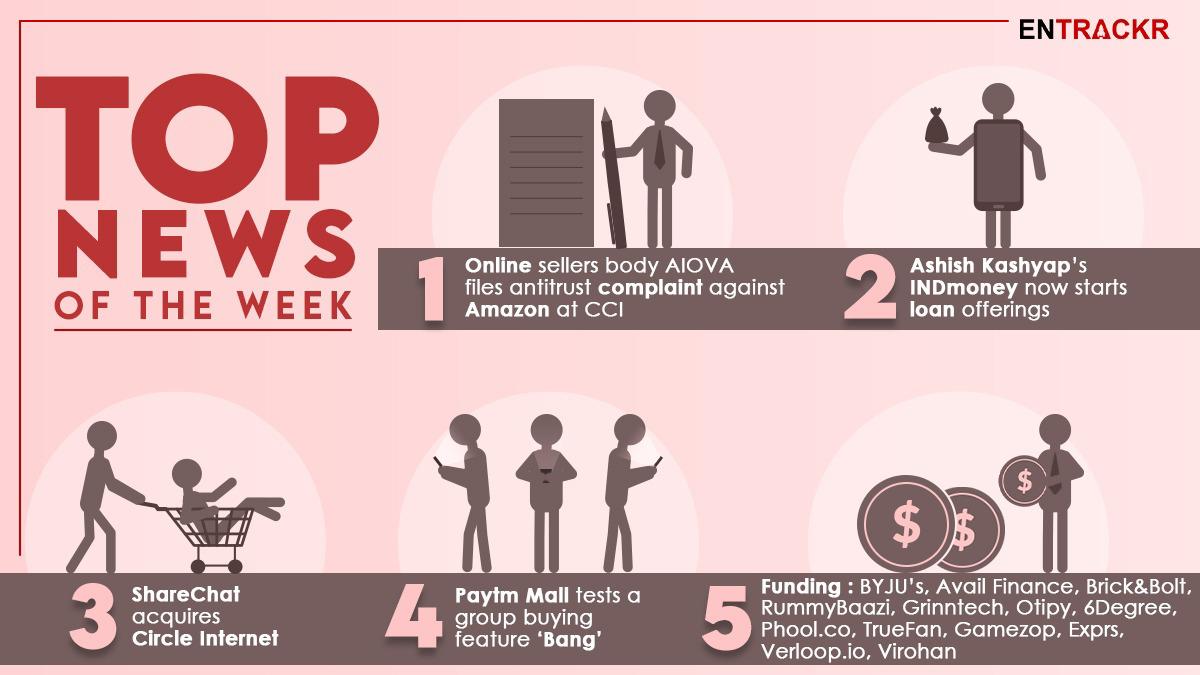
The mystery of the hundreds of bodies found in India’s Ganges river

Sujabad, India: Two weeks ago, as dawn broke over the Ganges river in this waterfront community, someone noticed several bodies in the shallows, the first of hundreds that would be found floating or buried in the sand as deaths from India’s coronavirus surge broke records.
Darsan Nishad, a 35-year-old man who works for an environmental program, was part of a crew sent to drag eight sodden corpses out of the water that day, then bind them for transport to be examined and later cremated, the formal last rite observed by India’s majority Hindu populace.
“We had no idea where they had come from. We had no idea if they had been sick,” he recounted this week, pointing out a bend in the river where they had carried out their grim task.
Shaken by the experience, Nishad drew on his faith in the Ganges, which Hindus revere as a sacred source of purity and protection.
“This water is sacred for all of us. We believe that if you dip it even once, you are protected for life,” he said, standing just a few feet from several charred and smoldering pits in the sand, where bits of wood, bamboo and cloth from recent cremations bobbed at the water’s edge. “She is our goddess.”
The mystery surrounding the bodies has not been solved, nor is it known how many were infected with the coronavirus. But many believe that families resorted to extreme measures because they could not afford to have their relatives cremated – a rite that once cost about $70 here but has skyrocketed to $400 since late last month, locals say, when a second wave of the virus struck India like a thunderbolt.
In Sujabad, a community of dirt alleys and tarp-covered huts that depends on the Ganges for its livelihood, many people are now out of work. Boatmen who once carried pilgrims and tourists along the river have been grounded by a pandemic lockdown. Fishermen are worried about their catch becoming contaminated. The only booming business, people said, is among the woodsellers who supply the essential ingredient of funeral pyres.
Policemen stand next to the bodies buried in shallow graves on the banks of Ganges river in Prayagraj, India, Saturday, May 15, 2021. Police are reaching out to villagers in northern India to investigate the recovery of bodies buried in shallow sand graves or washing up on the Ganges River banks, prompting speculation on social media that they were the remains of COVID-19 victims. (AP Photo/Rajesh Kumar Singh)
Policemen stand next to the bodies buried in shallow graves on the banks of Ganges river in Prayagraj, India, Saturday, May 15, 2021. Police are reaching out to villagers in northern India to investigate the recovery of bodies buried in shallow sand graves or washing up on the Ganges River banks, prompting speculation on social media that they were the remains of COVID-19 victims. (AP Photo/Rajesh Kumar Singh)
As India struggles to contain a protracted resurgence of coronavirus cases, the sheer number of deaths – around 4,000 on many days since late April and surpassing 4,500 this week – has overwhelmed communities and hollowed out their economies. Like the bodies found in the Ganges, whether they died of covid-19, heart attacks or old age, the inhabitants of these communities are victims of the virus, too.
The horrifying images of floating and half-buried corpses spurred government officials to action. Patrol boats have been sent up and down the Ganges, which meanders for 1,500 miles across northern India. Local and state authorities have established networks of free cremation sites, where firewood and priests are available to grieving families at no charge.
Several such sites are operating in Varanasi, a historic riverfront city 15 miles from Sujabad that features majestic stone steps to the Ganges called ghats. Normally, the ghats are crowded with Hindus who come to bathe, baptize their children and scatter the ashes of their dead. Now the ghats are nearly empty, but the public crematoriums are busy around-the-clock.
At one cremation site this week, a cluster of men watched sadly as a Hindu priest lit a pyre of wood and bamboo on an iron platform and chanted a prayer for their elderly mother, who had died that morning in a hospital. She was not a coronavirus patient, but her sons said they could not afford to pay the exorbitant prices for wood and other expenses.
The priest, Satindra Kumar, seemed worn out from long days leading funeral rites.
“I have done this 15 times in the last two days, mostly corona cases from the hospital, but other people are coming here, too,” Kumar said. “This pandemic has been devastating. The government is not doing enough to help rural areas. People are scared and suffering. Some say the virus is more powerful than God. I can’t stop it, but I will keep performing my prayers and hope it brings families some peace.”
In downtown Varanasi, a city of about 1 million, officials have set up a coronavirus command center, with banks of workers taking calls from the public, checking on isolated patients, ordering ambulances for those needing hospitalization and arranging cremations. A large screen on the wall shows constantly updated information on available beds, oxygen supplies and clusters of new virus cases.
But in rural areas, villagers whose loved ones die of the coronavirus or other causes must make do without such services.
Despite the extra costs, many still make the trip to the ghats for a proper Hindu blessing of the dead, saying the economic burden must be borne to follow ancestral traditions.
One morning this week, a group of village men, mourning the deaths of three female relatives, arrived at one of the city’s oldest ghats and prepared an offering of dough balls and spices, wrapped in large leaves, under the watchful eye of a priest. After he had blessed them, the men descended the stone steps, set the offerings afloat and scattered the ashes.
Then the group of farmers – who had already paid for three cremations – returned to pay for the waterside ceremony. They counted their pooled rupee notes nervously, adding up the costs including a barber, photographer, fees and gifts. The priest pocketed the notes, and the villagers started back for home, resigned to the steeper costs of fulfilling their religious duty at a time of uncertainty, death and fear of an invisible, lethal force.
“For generations our people have been coming here for last rites, which is sacred to us,” said Lakshmi Singh, a farmer in his 60s. “We have not seen many cases of corona, because we are isolated in our forests. But we have no fear of it. We make our offerings at the Ganges, as our ancestors did, and it keeps us safe.” Web Desk
Peace in Afghanistan inevitable for trade with Tajikistan: PM Imran

Islamabad: Prime Minister (PM) Imran Khan on Wednesday has said that peace in Afghanistan is inevitable for trade with Tajikistan.
While holding a joint press conference with Tajikistan President Emomali Rahmon, the premier said that Pakistan wants political stability in Afghanistan along with withdrawal of United States (US) forces.
Meanwhile, Tajik president has expressed will to boost ties with Pakistan.
Earlier in the day, a formal welcome ceremony in honor of visiting President of Tajikistan Emomali Rahmon was held at the PM House in Islamabad.
On arrival at the PM House, Prime Minister Imran Khan received the visiting dignitary.
A smartly turned out contingent of the armed forces presented guard of honor to the Tajik President. National anthems of both the countries were also played on the occasion.
The Tajik president also planted a sapling in the PM House under Billion Tree Tsunami drive.
It is to be mentioned here that Tajik president had arrived in Pakistan on a two-day visit. Federal Minister Khusro Bakhtiyar received him at Nur Khan Airbase. APP
Seven Year Itch: Covid-19 brings PM Modi to crossroads

New Delhi: Call it the seven year itch but the cruel Covid summer 2021 has brought Prime Minister Modi to the crossroads. From the euphoria of 2014 on the wings of hope and trust a chai-wallah made his debut on national stage, down riding the crest of popularity wave in 2019 of saab ka saath, saab ka vikas, saab ka vishwas which would lead India on a path of growth, displaying his muscular 56-inches chhathi to metamorphosing as a Himalayan hermitage sage in 2021.
May 30 marked seven years of the Modi Sarkar wherein he dazzled the country with brilliance, his oratory skills, decisiveness and battled with bull. A colossal Pied Piper to whose tune millions banged thaalis, clapped and light diyas.‘s If his first tenure was about ‘Swachch Bharat’ to ‘Make in India’, now it’s Aatma Nirbhar, and ‘Go vocal on local,’ NaMo’s progress is a study in chutzpah and grandeur.
Yet, there are visible signs that the war against Covid 19 seems to have dimmed Modi’s sheen in the face of death and devastation and gut-wrenching grief. Amidst the public aakrosh of dead corpses floating in the Ganga, stink of unclaimed bodies, burning pyres, smoked-out crematoriums, grieving families is a reminder of a putrefying political system where citizens totals statistical numbers.
The goodwill of ushering in aachche din has slowly dissipated. Modi seems to be floundering as the messiah of progress and modernity. Today, he seems unsure, uneasy whereby his emotional appeal and tears don’t seem to move even his ardent admirers with an increasingly angry and restive janata demanding answers.
Questionably, has his luck and leadership run out? Can the Prime Minister brush under the carpet that he and the BJP are to blame for the mess they are in today. Will the seven-year itch affect Modi as it did his predecessors Indira Gandhi in 1973-74 and Manmohan Singh in 2011? Will his dream run at the hustings continue? Is NaMo vincible?
Undoubtedly, the second wave has dented Modi’s image and the Government’s credibility in hard political currency. The glossy Teflon-coated protective veil around the Modi persona has been lifted and a governance deficit of callousness and mismanagement exposed. A floundering vaccine policy, lack of hospital beds, medicines, oxygen et al.
So what went wrong? Everything. Sadly, the Government has none but itself to blame for the incredible mess it finds itself in even as it fobs it off on an “pervasive, unaccountable “system”. The BJP tries distractive old tricks by creating a Congress ‘toolkit’ controversy and the Hindutva fountainhead RSS launches a campaign “Hum Jeetenge” and “Positivity Unlimited” to counter ‘negativity’ and apply balm but it comes across as insensitive and jarring.
Worse, it forgot that power is 99% perception and rightly or wrongly, Modi, his ministerial brood and the Party is perceived as arrogant and brash dictatorial running a one-man rock band albeit concentrating power in the PMO. A one-way street full of staccato monologue, no dialogue and questions are a strict no-no.
Certainly, Brand Modi has taken a hit. Asserted a senior BJP leader, “The pandemic has exposed the widening gaps between the Government and Party, denting their reputations. The winding up of additional capacity in Delhi in February as cases were rising in Maharashtra and Kerala, demonstrated our lack of anticipation compounded by the absence of Ministers, MPs, MLAs and workers from the scene to provide relief and aid.”
The coming months pose a stiff challenge. The Government’s future hinges on how quickly and effectively it addresses the issue of mass vaccination of people specially belonging to marginalized and poorer sections of society. Given the pandemic could upset the BJP’s ideological and electoral applecart.
Politically, next year will be decisive as seven States go to polls: UP, Gujarat, Uttarakhand, Himachal, Punjab, Goa and Manipur against the backdrop of a relentless Covid shadow. The stakes in UP and five others barring Punjab are high as it promises to become a referendum and a litmus test on the BJP more so post the West Bengal defeat which has dented the Modi-Shah image of invincibility. Consequently retaining these States is vital.
His second challenge is a course correction of the economy. According to the Centre for Monitoring Indian Economy rural unemployment rate touched 13.5%, urban joblessness rose to 17.4% totaling a national new high of 14.7% last week. The annual GDP performance in 2020 crashed to -8.0%, the worst amongst all developing nations (Bangladesh grew at 3.8% in 2020). Add to this, rising oil prices, consumers buying less and a slowing economy. Clearly, bread-and-butter issues are back on the economic delivery table. Modi in 2014 had asked for 10 years to put India on track, let’s see.
Paradoxically, even as Covid 19 gives the moribund Opposition a unique opportunity to put Modi on the mat, hold him accountable and resurrect itself, it is too timorous to claim it. Primarily, because of the disarray within the Congress, the largest Opposition Party which has largely been in suspended animation wherein Sonia-Rahul look more like a bunch of stricken virus patients than like determined champions of the democratic mandate to hold the Government to account.
Their failure to seize the opportunity or the collective Opposition’s unwilling to confront and corner the Government on substantive issues of mishandling the second wave, economic mismanagement to demand accountability along-with the TINA (there is no alternative) factor has ensured that Modi retains his macho numero uno and still enjoys goodwill.
Of course, he is no magician as he has to live up to huge expectations generated by his 3D media campaign on social and digital networking sites, twitter, U tube etc. His task is not enviable and the burden enormous given our fickle and unforgiving voters. Much is expected of him.
Startlingly, Modi has still to address key developmental issues that continue to exercise people: law and order, preventing crime against women and children, inflation, illiteracy and ill-health which are the touchstone of the much-hyped and illusionary deal of roti, kapada aur makan. Look at the irony. Cellphones go abegging, yet people continue to beg for food.
Ultimately, much will depend upon Modi’s political will and priorities in the weeks and months ahead. He knows only too well staying ahead is the name of the game. The leader who survives is the one that rises to meet the moment, who has the wisdom to recognize the threat and the will to turn it back, and does so before it is too late. Scroll.In
6kg of uranium seized in India, 7 people arrested

New Delhi: Police in India have arrested seven people and seized 6.4 kilogrammes of uranium from their possession, Indian media reported on Friday, marking the second time in less than a month that authorities have captured a large quantity of the radioactive material from unauthorised persons in the country.
According to the Indian Express, the incident took place in the eastern state of Jharkhand in Bokaro district. The report said that officials had not yet arrested the prime suspect from whom the substance was procured.
“Seven people were arrested for possessing and planning to sell a mineral, which is suspected to be uranium after we received a tip. We are further investigating the case and the mineral [has been] sent to the lab to check its veracity,” the report quoted SP Chandan Jha as saying.
However, the publication noted that the press release issued by the Bokaro police and the FIR mentioned the mineral to be uranium. “SP Jha refused to comment on whether any other investigating agency was involved and also did not comment on whether they sought custodial interrogation of the arrested accused,” the publication said.
According to the Times of India, the suspects — suspected to be part of a national gang involved in illegal uranium trade — were searching for customers and had fixed its price at 5 million INR. The report added that two of the men arrested have a criminal history.
“It is unclear how they got their hands on the radioactive material. During interrogation, they mentioned West Bengal, Giridih and a few other places. Seven mobile phones and a motorcycle were also seized from them,” the publication quoted the same SP as saying.
Last month, Indian police had seized over seven kilogrammes (15.4 pounds) of natural uranium and arrested two men in the western Maharashtra state for “illegally possessing” the highly radioactive substance.
It was the second time in India that such a highly radioactive substance was seized by police in recent years. In 2016, police seized almost 9kg (19.8 pounds) of depleted uranium in the Thane area of Maharashtra.
Uranium is used in several areas, including nuclear explosives and medical techniques. The very fact that some people stole or illegally mined uranium raises concerns about nuclear safety and security in India. It also indicates the possibility of a nuclear market existing in India that could be connected to international players.
Earlier this month, Pakistan had voiced serious concern after reports of the Maharashtra seizure emerged, pointing to gaps in state control mechanisms there.
“We have noted with serious concern the reports about seizure of more than 7kg natural uranium from unauthorised persons in India,” Foreign Office Spokesman Zahid Hafeez Chaudhri had said.
“Security of nuclear materials should be the top priority for all countries,” Chaudhri added.
“There is a need for thorough investigation of the matter as to how such sizeable quantity of uranium could become available outside any state control and identify the gaps which made this possible.” AFP
Protect doctors from Covid-19 as well as BJP’s callousness: Rahul Gandhi

New Delhi: Congress leader Rahul Gandhi said that doctors need to be protected from the coronavirus infection as well as from the “callousness” of the Bharatiya Janata Party government. “Save the saviours,” Gandhi said in a tweet.
Many doctors working on the frontlines have died since January 2020. As many as 624 doctors have died during the second wave of the coronavirus pandemic, the Indian Medical Association had said on Thursday. Last year, 748 doctors had succumbed to the infection during the first wave, according to the association.
However, the deaths among doctors could be higher as the association keeps records of only around 3.5 lakh of its members. There are more than 12 lakh doctors in India.
Frontline health workers have also had to put in long, strenuous shifts to handle the rush of patients, risking exposure to the infection. Many times the doctors are under-equipped and not properly protected from the infection.
A junior doctor in Delhi, interviewed by Scroll.in in May, had flagged several concerns such as sub-standard personal protective equipment kits and the lack of soaps, hand sanitisers and disposable cups to drink water from at a makeshift Covid-care facility.
The doctor had informed the authorities about the shortcomings in safety precautions for health workers. She claimed her grievances were not addressed, and tendered her resignation.
Apart from this, there have also been several incidents of assault on frontline workers in India. In one such case on Tuesday, a mob attacked a doctor at a Covid-19 care centre in Assam after a patient died during treatment.
The doctor, identified as Dr Seuj Kumar Senapati, was posted in Assam’s Hojai district. A video circulating on social media showed the doctor being beaten up with a metal object. He was hospitalised and is reportedly stable now.
In another instance that took place last week, a mob had allegedly beaten up a doctor in Karnataka’s Chikkamagaluru district after a six-year-old patient died, reported the Hindustan Times. Both Assam and Karnataka are ruled by the BJP.
Meanwhile, India on Friday morning reported 1,32,364 new coronavirus cases over the past 24 hours, while deaths rose by 2,713. The country’s tally of infections now stands at 2,85,74,350 since the outbreak in January 2020, while the toll has reached 3,40,702, health ministry data showed. Scroll.In
Cow guards killed Muslim man & injured four others in Uttar Pradesh
June 7
Uttar Pradesh: A Muslim man has been killed and four others injured by a cow-watching group in the Indian state of Uttar Pradesh. The incident took place Wednesday night in a small village in UP’s Mathura district, according to The Muslim Mirror.

The guards attacked the victims, accusing them of smuggling cows. According to a video from Abaster News, a priest at the Barsana Ashram has admitted that he was present at the scene of the brutal lynching.
“I got a call at 3:30 in the morning that a group of men was smuggling cows. Another man and I set off on a motorcycle.”
Five survivors of the attack were taken to the district hospital for treatment. Police said half a dozen cattle were recovered from the scene and vehicles were also seized.
In a video tweeted by Mathura police, rural SP Sherish Chand said that action would be taken against the cow smugglers.
The Hindustan Times further quoted him as saying that the four comrades who were killed were in police custody and had been referred to the district hospital for treatment.
Chand further alleged that the victims opened fire on the villagers. In retaliation, villagers opened fire on him and allegedly killed the Muslim man. Web Desk
June 7,


